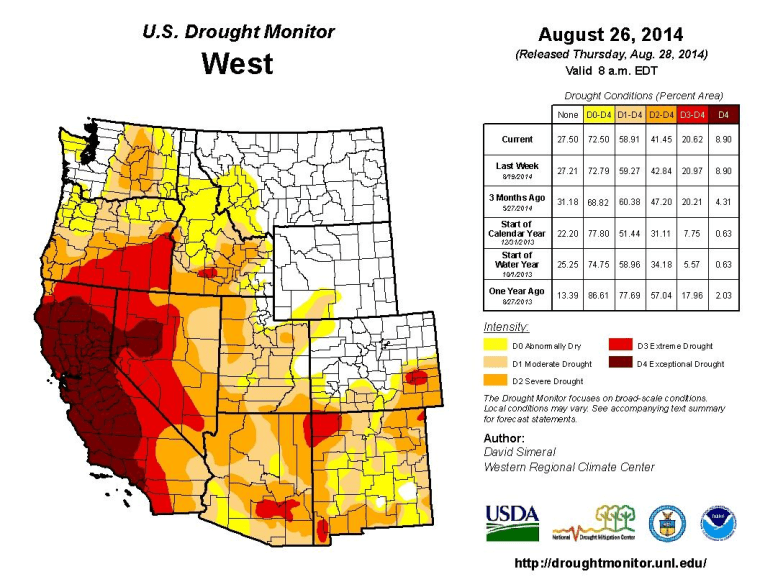The U.S. Southwest faces a strong chance of a 35-year “megadrought” in this century, according to a new study that used paleoclimate and instrumental data to tweak climate models.
The research, led by Toby Ault, a Cornell University assistant professor of earth and atmospheric sciences, found that the chance of a megadrought lasting at least 35 years in this century was 20 to 50 percent, depending on how much climate change was assumed — and that for some areas of the Southwest, the risk of decade-long drought was at least 80 percent and perhaps higher than 90 percent.
That represents a substantial difference from what state-of-the-art climate models have predicted, said Julia E. Cole, a geosicences professor at the University of Arizona who was a co-author of the paper, published in the American Meteorological Society’s Journal of Climate.
The results were alarming, Cole told NBC News. She noted that Arizona is in the throes of a drought that’s already lasted 15 years, and the idea that a drought could last 15 or more years beyond that would require changes in how humans interact with their environment.
“This kind of drought should change the way we think about water,” Cole said.
Ault told NBC News that a next step would be using the research to estimate how much water might be available in these megadrought periods, giving policy makers another tool for planning for such risk.
“Managing it is going to be very challenging,” said Ault, who lived in Tucson while working on his master’s degree and doctorate from the University of Arizona. “But even then I think we can do it. We’re a very clever, adaptable species. I’m optimistic that we can find ways to do this.”
He added: “I don’t think it’s any different than coping with the risk of hurricanes in a low-lying area.”
The paper noted that decade-scale droughts like the 1930s Dust Bowl occur in the U.S. once or twice per century. But longer-term droughts also are well-represented, the researchers said — in the Southwest’s paleoclimate record. Cole said the team found previous long-term droughts in data from tree rings and sediments left in lake beds and caves. Using that record and observational data, and adding assumptions for climate change, the researchers adjusted climate models that didn’t predict long-term drought well.
In addition to risk of 35-year drought, the study says that an unprecedented drought extending 50 or more years was possible, with a risk level of 5 to 10 percent.
“Moreover,” the study says, “future drought severity will be exacerbated by increases in temperature, implying that our results should be viewed as conservative provided that the models depict accurate forced trends in regional hydroclimate.”

The West has been suffering persistent drought. Nearly all of California has been at the top four levels of drought (on a five-level scale) for much of the year, and nearly 60 percent of the state has been under the most extreme level — exceptional drought — for a month, with no relief this week, according the latest U.S. Drought Monitor map.
Ault cautioned against trying to use such current drought conditions as a signal of imminent disaster.
Still, he said, “It’s the kind of thing that is predicted to happen during climate change. It’s a look at the shape of things to come.”